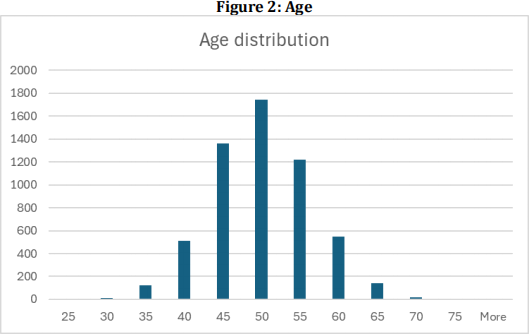关键词 > COMM1190
COMM1190 Data, Insights and Decisions 2024 Assessment 1: Initial report
发布时间:2024-06-14
Hello, dear friend, you can consult us at any time if you have any questions, add WeChat: daixieit
COMM1190 Data, Insights and Decisions
Assessment 1: Initial report
Customer churn project
Version as of 29 May 2024
The Head of Management Services of Freshland needs to make a presentation to the Senior
Executive Group who have requested an update on customers who belong to their rewards card program. The Head commissioned a pilot study that was undertaken by a summer intern using a sample of administrative data that contains information on rewards card customers and their store purchases.
The intern's report written in response to these instructions is contained in a memo to the
Head, a copy of which is included in Appendix A. The data dictionary in Appendix B refers to the data you will use. This data set will contain, as a subset, the initial pilot data analysed by the intern. See Moodle in the Assessment section for further information on your personalized data.
MEMORANDUM
DATE: 17 March, 2024
TO: Head, Management Services
RE: Research project using customer pilot data
Introduction
This report documents an initial statistical analysis of customer data collected from the rewards program database. All information was extracted in the first week of January 2024. The initial data set contains observations on 5,847 customers who were all members of the rewards program and includes information on customer demographics and spending at their last purchase over the preceding 12 months. The analysis is divided into 4 sections covering general customer characteristics, spending, level of satisfaction with our services at that last purchase, and a concluding section with recommendations.
Customer characteristics
Figure 1 and Table 1 provide some key characteristics of customers in the rewards program.

Most customers are female (79.4752%) and live in metropolitan areas (63.3145%). The average age is 48.017059 years, and they have been members of the rewards program for an average of 2.636224 years. One way to define a loyal customer is to use their length of membership as an indicator. Define a new variable ltmem=1 if member>=3 and zero otherwise. According to this definition, 58.235% of customers are loyal.

According to Figure 2, the age distribution of customers is bell-shaped, and there are no outliers.

Customer spending
The spending variable that was made available represents the amount spent on the last shopping occasion during 2023. Table 2 provides some summary statistics for last and cash.
There was missing data because some customers had no transactions in the last year, leaving a sample size of 5330 for the analysis. On average, customers spent $79.87305. Because the mean ($79.87305) and median ($64.17379) are not the same, we know that this distribution is not symmetric. The proportion of customers using cash to conduct this transaction was 0.208818.

A correlation analysis was conducted, and the results presented in Table 3. Older customers spent less as did customers belonging to the rewards program for longer. Female customers and those in metroareas spent more but none of the correlations were very large. There were stronger correlations between customer characteristics and cash. Customers who were older and belonged to the rewards program for longer were more likely to use cash. The strong negative correlation between cash and last indicates that cash transactions tended to be for smaller amounts.

Customer satisfaction
When asked about whether they were satisfied with the last shopping experience, the average rating of customers was 2.147092, see Table 4.

The underlying distribution of the satisfaction rating is very skewed, with nearly 50% of customers providing the lowest rating, see Figure 3.

Referring to the correlation matrix in Table 3 reveals there is little correlation between sat and age or female. However, higher ratings are positively associated with longer term members and negatively associated with being a metropolitan customer. Those who used cash and spent less were more satisfied.
The strong positive association between length of membership and satisfaction is highlighted in Figure 4 where the distribution of ratings has been separated by the previously defined variable, ltmem. The low satisfaction rating is concentrated amongst the newer members.

Conclusion and recommendation
Several conclusions can be drawn from the analysis that has been conducted. The typical rewards program customer is female, about 48 years old, lives in a metropolitan area and has been a member for about 2 years.
Cash is still being used for transactions and not surprisingly is more prevalent amongst older customers who have belonged to the rewards program for longer.
Satisfaction levels are low and need to be improved. Because the correlation between higher ratings and length of membership was high, more attention should be paid to newer members and the reasons for why they are dissatisfied. This is an important finding in understanding customer loyalty but there needs to be further analysis to better inform retention strategies.
Recommendation: The current data set is not overly large, and obtaining more customer observations is essential to facilitate extra analyses and to find more significant results.
Appendix B: Data dictionary
The data seton customers from the rewards program database includes the following variables:
age Age of the customer in years
female =1 if customer is female; =0 otherwise
member Number of years as a member of loyalty club (top coded at 4)
metro =1 if customer is located in a metropolitan area; =0 otherwise
location Customer location: 1=metropolitan; 2=regional; 3=all other regions
ID Unique customer identifier
last Amount ($) of the last transaction in the previous 12 months
cash =1 if the last transaction was paid in cash; =0 otherwise
sat Satisfaction rating of last transaction; 1 (highest=Excellent) to 5 (lowest=Poor)
pilot =1 if initial data collected for pilot study; =0 otherwise

